Have you ever wondered, why do dogs have wet noses? This intriguing question not only sparks curiosity but also opens the door to understanding our furry friends better! Many dog lovers notice that their pets’ noses are often moist, but few know the surprising reasons behind this phenomenon. Is it just a quirk of nature, or does it serve a more important purpose? In this article, we will explore the scientific explanations for why dogs’ noses are wet, and how this unique trait plays a crucial role in their sense of smell and overall health. From maintaining temperature regulation to enhancing their olfactory abilities, the wetness of a dog’s nose is more than just a cute characteristic. So, if you’re asking yourself, “Why is my dog’s nose wet?” or “What does it mean when my dog’s nose is dry?”, you’re in the right place! Join us as we dive into the fascinating world of canine biology and discover the secrets behind those adorable, wet noses. Get ready to be amazed by the hidden functions that make our dogs even more remarkable than we thought!
The Science Behind Canine Hydration: Why Are Dogs’ Noses Wet?
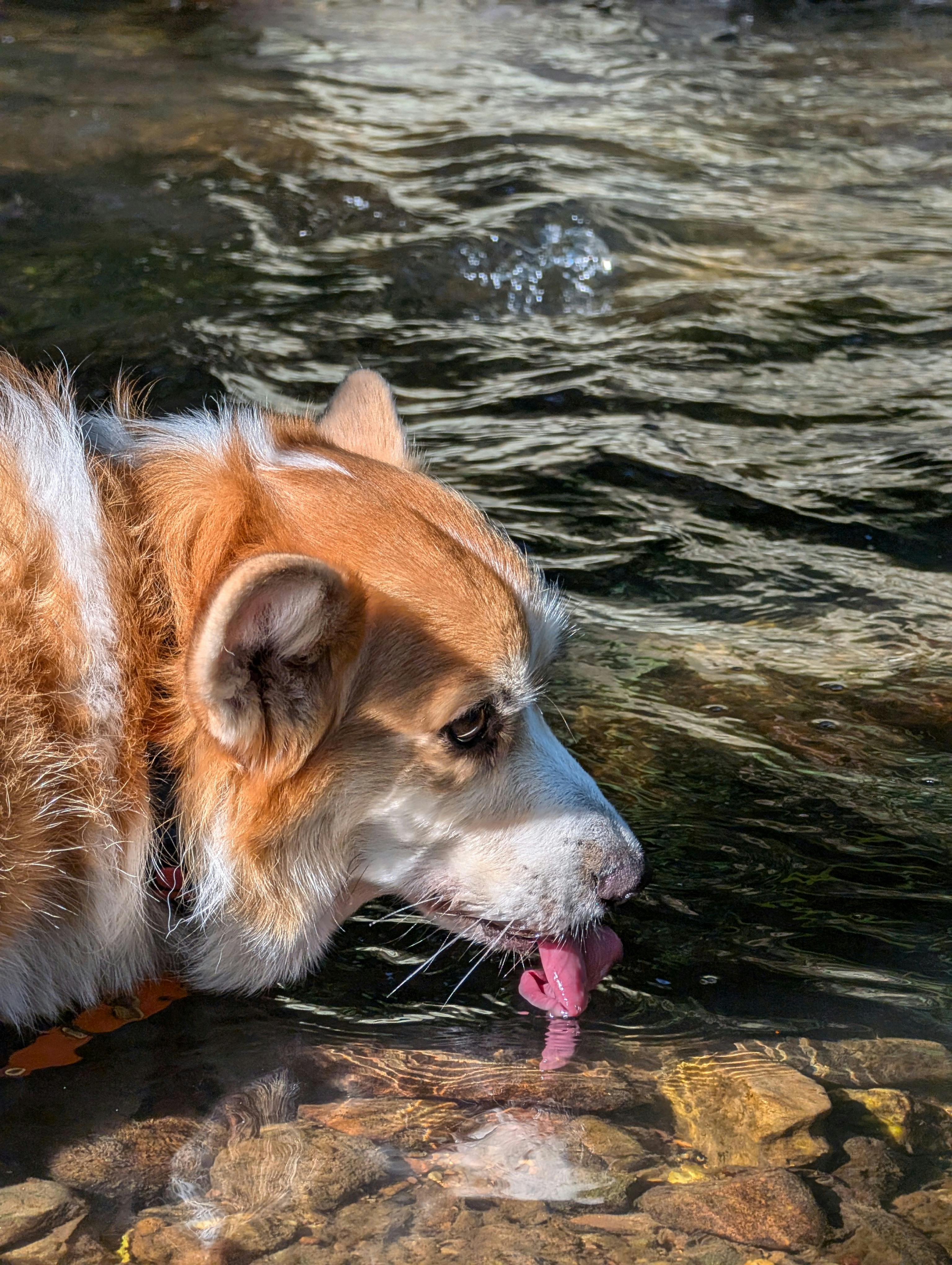
Have you ever wondered why dogs have wet noses? It’s one of those quirky things about our furry friends that’s both endearing and a bit mysterious. Many people often think that a wet nose is simply a sign of a healthy dog. But there’s actually science behind this phenomenon, and it can tell us a lot about canine biology. So let’s dive into the surprising reasons why dogs’ noses are wet and what it means for their health and behavior.
The Basic Biology of Dog Noses
Dogs have an incredible sense of smell, they say it’s thousands to even millions of times more sensitive than humans. A wet nose plays an important role in this. When a dog’s nose is moist, it helps to capture scent particles from the air. This moisture is vital for the olfactory receptors to function properly. Here are some key points about the biology of a dog’s nose:
- Olfactory Receptors: Dogs have about 220 million olfactory receptors in their noses, compared to about 5 million in humans. This means they can detect scents at incredibly low concentrations.
- Moisture Absorption: A wet nose absorbs scent molecules more effectively, enhancing a dog’s ability to smell.
- Temperature Regulation: Dogs don’t sweat like humans. Instead, they cool down through their noses and paw pads. A wet nose can help in regulating their body temperature.
Why Are Dogs’ Noses Wet?
So why do dogs have wet noses? It’s not just about smelling better; there are several fascinating reasons:
- Scent Detection: As mentioned, moisture helps in capturing scent particles. When the nose is wet, it increases the surface area for scent absorption.
- Thermoregulation: Dogs sweat little, and their wet noses can help with cooling down, especially in warmer weather.
- Health Indicator: A dog’s nose can indicate its health status. A wet and cool nose usually signifies good health, while a dry or warm nose can sometimes indicate illness. But this isn’t always a reliable measure.
- Behavioral Communication: Dogs often lick their noses as a way to communicate or show submission, and a wet nose can be more inviting to other dogs or humans.
The Role of Licking
Dogs often lick their noses throughout the day. This behavior contributes to the moisture on their noses. Here are some reasons why they do this:
- Taste and Smell: By licking, dogs are tasting their environment. This helps them gather information about their surroundings.
- Hydration: Licking helps to keep their noses hydrated, which is crucial for scent detection.
- Stress Relief: Similar to humans biting their nails, dogs may lick their noses when they’re anxious or nervous.
The Science of Hydration
Hydration is key to a dog’s overall health, and that includes their noses. A dog’s wet nose is a clear indicator of hydration levels. Here are some tips to ensure your dog stays hydrated:
- Fresh Water: Always provide access to clean, fresh water. Dogs can get dehydrated quickly, especially during hot weather.
- Wet Food: Including wet food in your dog’s diet can help increase moisture intake.
- Monitor Activity: Keep an eye on their activity levels, especially in the heat. Dogs can overheat easily, so ensure they have breaks and water during play.
The Myths Surrounding Wet Noses
There are many myths about dog noses that just aren’t true. Let’s debunk a few:
Myth: A warm nose means a dog is sick.
- Fact: A dog’s nose temperature varies greatly and isn’t a reliable health indicator.
Myth: Only sick dogs have dry noses.
- Fact: Dogs can have dry noses for many reasons, including environmental factors like heat or dryness.
Myth: All dogs’ noses are wet all the time.
- Fact: Some breeds have drier noses, and that can be perfectly normal.
Fun Facts about Dog Noses
- Unique Patterns: Just like human fingerprints, every dog’s nose print is unique. It can even be used for identification!
- Color Variations: The color of a dog’s nose can vary based on breed, genetics, and health.
- Sensitivity: Dogs can detect certain scents up to a mile away, thanks to their wet noses.
Understanding why dogs have wet noses is not just a fun fact for dog lovers but also a glimpse into their complex biology. This unique trait plays a vital role in their health, behavior, and interaction with the world. As pet owners, recognizing the significance of a dog’s wet nose can also help us ensure they lead happy, healthy lives. So next time you give your dog a pat, take a moment to appreciate the
Exploring the Benefits of a Wet Nose: What Does It Mean for Your Dog’s Health?

When you think about dogs, one of the first things people notice is their wet noses. Its kinda cute and often makes you wonder, why do dogs have wet noses? Is it just an adorable trait, or does it mean something more about their health? In this article, we gonna explore the surprising benefits of a wet nose and what it actually means for your dog’s well-being.
The Science Behind Wet Noses
Dogs noses are usually wet because of moisture. This moisture helps them smell better. Dogs have an amazing sense of smell, and a wet nose helps to absorb scent particles. When they sniff, the moisture attracts the scent, making it easier for them to detect smells. This is why dogs are often used in search and rescue operations or sniffing out drugs.
Also, their noses are equipped with special glands that produce this moisture. These glands keep the nose cool and help regulate their body temperature. So, when you see your dog with a wet nose, it’s not just a sign of excitement; it also plays an important role in their health and functioning.
The Benefits of a Wet Nose
A wet nose can indicate several benefits for your dog. Here are some important points to consider:
- Enhanced Smell: As mentioned, a wet nose helps dogs smell better. This is crucial for their interaction with the environment.
- Temperature Regulation: Dogs don’t sweat like humans do. A wet nose helps keep them cool, especially during hot weather.
- Health Indicator: A healthy dog usually has a moist nose. If you notice it’s dry or cracked, it might be a sign of dehydration or illness.
- Behavioral Signals: When dogs are excited or happy, their noses tend to be wetter. This can help you understand their emotional state better.
Why Do Dogs Have Wet Noses? Discovering the Reasons
There are a few reasons why dog noses stay wet. It’s not just random!
- Gland Activity: Dogs have mucus-producing glands in their noses. These glands create moisture that keeps the nose damp.
- Licking: Dogs often lick their noses. This natural behavior helps to keep their noses wet and can also spread scents to their scent receptors.
- Environmental Factors: Humidity and temperature can impact how wet their noses are. In dry conditions, dogs may have drier noses.
The Historical Context of Dog Noses
Interestingly, the wet nose is not just a modern phenomenon. Throughout history, dogs have been known for their keen sense of smell. Ancient cultures recognized that dogs were more than just companions; they were invaluable assets for hunting and tracking. Ancient Egyptians even revered dogs for their abilities and often depicted them in art with wet noses, symbolizing their connection to the hunt.
What Does a Dry Nose Mean?
While wet noses are generally a good sign, sometimes a dry nose can indicate health problems. Here are some reasons that could cause a dry nose:
- Dehydration: If your dog isn’t drinking enough water, their nose may dry out.
- Illness: A dry nose can be a sign of fever or other health issues.
- Allergies: Environmental allergies can lead to a dry, irritated nose.
- Weather Effects: Cold or windy weather can also cause a dog’s nose to dry out.
How to Care for Your Dog’s Nose
Taking care of your dog’s nose is important. Here’s a simple list of things to consider:
- Hydration: Make sure your dog drinks plenty of water.
- Moisturizing: If their nose looks dry, there are safe dog-friendly moisturizers available.
- Regular Vet Check-ups: Regular visits to the vet can help catch any potential health issues early.
- Observe Behavior: Keep an eye on your dog’s behavior. If their nose changes significantly, consult with a veterinarian.
Fun Facts about Dog Noses
- Did you know that every dog’s nose print is unique, just like human fingerprints?
- Dogs can detect certain diseases, like cancer, just by smelling breath samples.
- The wetness of a dog’s nose can change throughout the day, depending on their activity level and environment.
Understanding why dogs have wet noses can help you appreciate your furry friend even more! Their wet noses are not just a cute feature; it’s an essential part of their health and communication. So next time your dog greets you with a friendly nuzzle, remember that wet nose is doing a lot more than you might have thought! Keep an eye on their health, and make sure they stay hydrated. Your dog will thank you with those adorable wet kisses!
Top 5 Fascinating Facts About Dogs’ Wet Noses You Didn’t Know
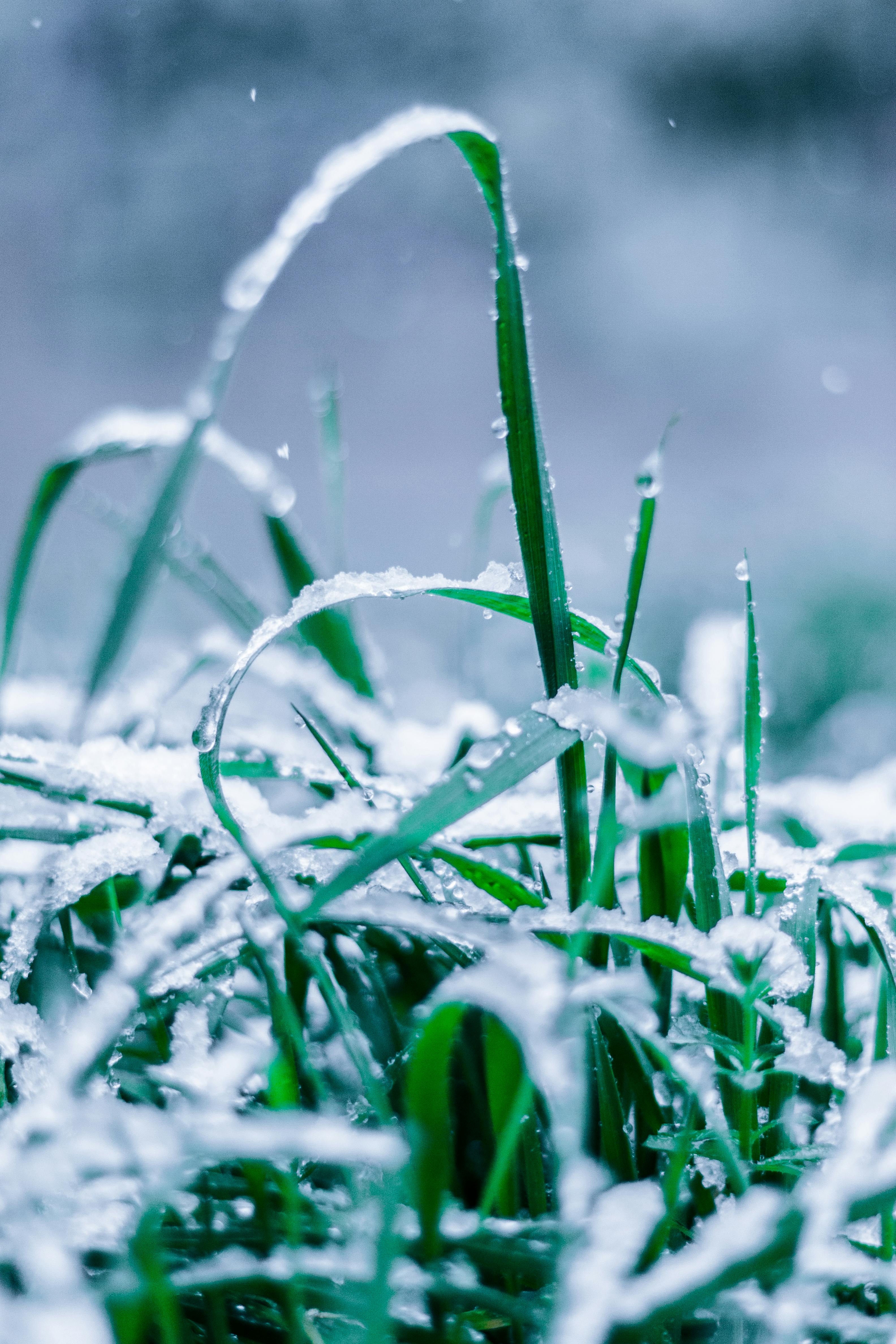
Dogs are often known as “man’s best friend,” and one of the most endearing qualities of these furry companions is their wet noses. But have you ever wondered why do dogs have wet noses? There are some fascinating reasons behind this adorable trait that might surprise you! Let’s dive into the top 5 intriguing facts about dogs’ wet noses that you probably didn’t know.
1. It’s All About Sensing
One of the main reasons why dogs have wet noses is that it helps them to smell better. Dogs have an incredible sense of smell, and their noses play a crucial role in this. A wet nose helps to trap scent particles from the air, allowing dogs to detect smells more effectively. The moisture on their noses, which is often due to saliva or environmental factors, helps to absorb scent molecules. This is why dogs can sniff out things we can’t even imagine!
2. Temperature Regulation
Did you know that a dog’s wet nose also helps them regulate their body temperature? Just like humans sweat through their skin, dogs use their noses to keep cool. When a dog pants, moisture evaporates from their nose, which can help lower their body temperature. This is especially important for dogs during hot weather or after exercise, when they need to cool down quickly.
3. Communication Tool
Dogs communicate in many ways, and their nose is no exception. A wet nose can be a sign of a happy and healthy dog. When dogs greet each other, they often touch noses as a form of social interaction. A wet nose may indicate that a dog is relaxed, which can signal to other dogs that they are friendly. In contrast, a dry nose might suggest stress or illness. So, the next time you see a dog with a wet nose, you might be witnessing a moment of communication!
4. Health Indicators
The moisture level of a dog’s nose can also be an important health indicator. While a wet nose is generally a sign of good health, a sudden change to dryness or excessive wetness can signal health issues. Some common conditions that might cause a change in nose moisture include:
- Fever: A dry nose can indicate that a dog has a fever.
- Dehydration: Dogs that are dehydrated may have a dry and cracked nose.
- Allergies: Allergic reactions can lead to a runny nose, making it excessively wet.
- Infections: Certain infections can cause changes in the moisture level of a dog’s nose.
5. Unique Nose Print
Every dog has a unique nose print, much like human fingerprints! The patterns and ridges on a dog’s nose are distinct and can be used to identify them. This uniqueness can serve a practical purpose, as it can aid in locating lost pets. In fact, some animal shelters and organizations use nose prints as a method of identification. This fascinating fact highlights yet another reason to appreciate those cute, wet noses!
Fun Facts About Dog Noses
- Dogs have over 220 million scent receptors in their noses, compared to about 5 million in humans.
- The wetness of a dog’s nose is often due to a mix of mucus and saliva.
- Puppies are born with dry noses but tend to get wet as they grow and explore the world.
- A dog’s sense of smell is so powerful that they can detect certain diseases, including cancer and diabetes.
The Science Behind the Moisture
The moisture on a dog’s nose is not just random. It’s actually a combination of saliva and environmental moisture. When dogs lick their noses, it helps to keep them wet, which enhances their ability to smell. This is a natural behavior that has evolved over time, making dogs effective hunters and companions.
Comparison of Dog Noses with Other Animals
| Animal | Nose Moisture Level | Scent Receptors |
|---|---|---|
| Dogs | High | 220 million |
| Cats | Moderate | 5 million |
| Elephants | Very High | 2.5 billion |
| Humans | Low | 5 million |
As you can see, dogs are not alone in having fascinating noses, but theirs are particularly remarkable due to their high moisture levels and scent receptor count.
Understanding why do dogs have wet noses not only helps us appreciate our pets more but also gives us insight into their health and behavior. So the next time you give your furry friend a pat and feel that wet nose, remember all the incredible reasons behind it! Dogs truly are amazing companions, and their noses are just one of the many features that make them so special.
Is Your Dog’s Wet Nose a Sign of Illness? Recognizing Health Indicators

When you see your dog with a wet nose, you probably think, “Aww, he’s so cute!” But have you ever wonder if that wetness means something more? Is it a sign that your dog is sick, or is it just part of being a dog? Let’s dig into the reasons why dogs have wet noses and what it could mean for their health.
Why Do Dogs Have Wet Noses?
Dogs have wet noses for various reasons, and it’s not just about being adorable. A wet nose can help dogs in multiple ways:
- Scent Detection: Dogs rely on their sense of smell more than humans. A moist nose helps to capture scent particles better, enhancing their ability to smell. This is why you often see them sniffing around everything!
- Temperature Regulation: Dogs don’t sweat like humans do. Instead, they regulate their body temperature through panting and sometimes through their noses. A wet nose can help cool them down a bit.
- Health Indicator: A healthy dog usually has a wet nose. But, that doesn’t mean it’s always a sign of good health.
Is Your Dog’s Wet Nose a Sign of Illness?
Now, this is where it gets tricky. A wet nose is normal for most dogs, but changes in moisture levels could indicate a health problem. Here’s what to look out for:
- Dry Nose: If your dog’s nose is dry and cracked, it could be dehydrated or have a fever.
- Excessively Wet Nose: On the other hand, if your dog’s nose is excessively wet, it might be a sign of allergies or an infection.
- Change in Color: A healthy dog’s nose is typically black or brown. If you notice a change in color—like turning pink or developing sores—this may be a health concern.
Recognizing Health Indicators
It’s important to recognize what a healthy nose looks like versus what might indicate illness. Here’s a quick guide:
| Condition | Healthy Nose | Potential Illness |
|---|---|---|
| Moisture Level | Slightly wet | Dry or excessively wet |
| Color | Dark brown or black | Light, pink, or sores |
| Texture | Smooth | Cracked or rough |
| Temperature | Cool | Warm or hot |
Other Signs of Illness to Look For
A wet nose is just one indicator of your dog’s health. You should also be aware of other signs that might alert you to problems. Watch for these:
- Behavior Changes: If your dog is usually playful but suddenly seems lethargic, it could be a sign something’s wrong.
- Eating Habits: A loss of appetite is often a red flag.
- Vomiting or Diarrhea: These are clear signals that your dog might not be feeling well.
- Coughing or Sneezing: Persistent coughing or sneezing could indicate respiratory issues.
Surprising Factors Affecting Your Dog’s Nose Moisture
There’s more behind that wet nose than just health. Here are some surprising factors that might affect your dog’s nose moisture levels:
- Weather: Hot and dry weather can lead to a drier nose, while humidity can cause it to be wetter.
- Breed Differences: Certain breeds, like Bulldogs, may have drier noses due to their unique snouts.
- Age: Older dogs may experience changes in their nose moisture levels.
- Diet: A poor diet can impact overall hydration, including the nose.
How to Help Maintain Your Dog’s Health
Keeping an eye on your dog’s nose is just one part of their overall health. Here are some tips to help you keep your furry friend healthy:
- Regular Vet Visits: Make sure you bring your dog to the vet at least once a year for a check-up.
- Hydration: Always provide fresh water for your dog to stay hydrated.
- Healthy Diet: Feed your dog a balanced diet that meets their nutritional needs.
- Grooming: Regular grooming can help catch any skin issues or changes in your dog’s health.
In short, while a wet nose is often a sign of a happy, healthy dog, it’s important to pay attention to any changes. Keep a watchful eye on your dog’s nose moisture, color, and overall behavior. Understanding these signs can help you catch potential health issues early and keep your furry companion thriving.
How Do Dogs Use Their Wet Noses to Communicate with Humans and Other Dogs?
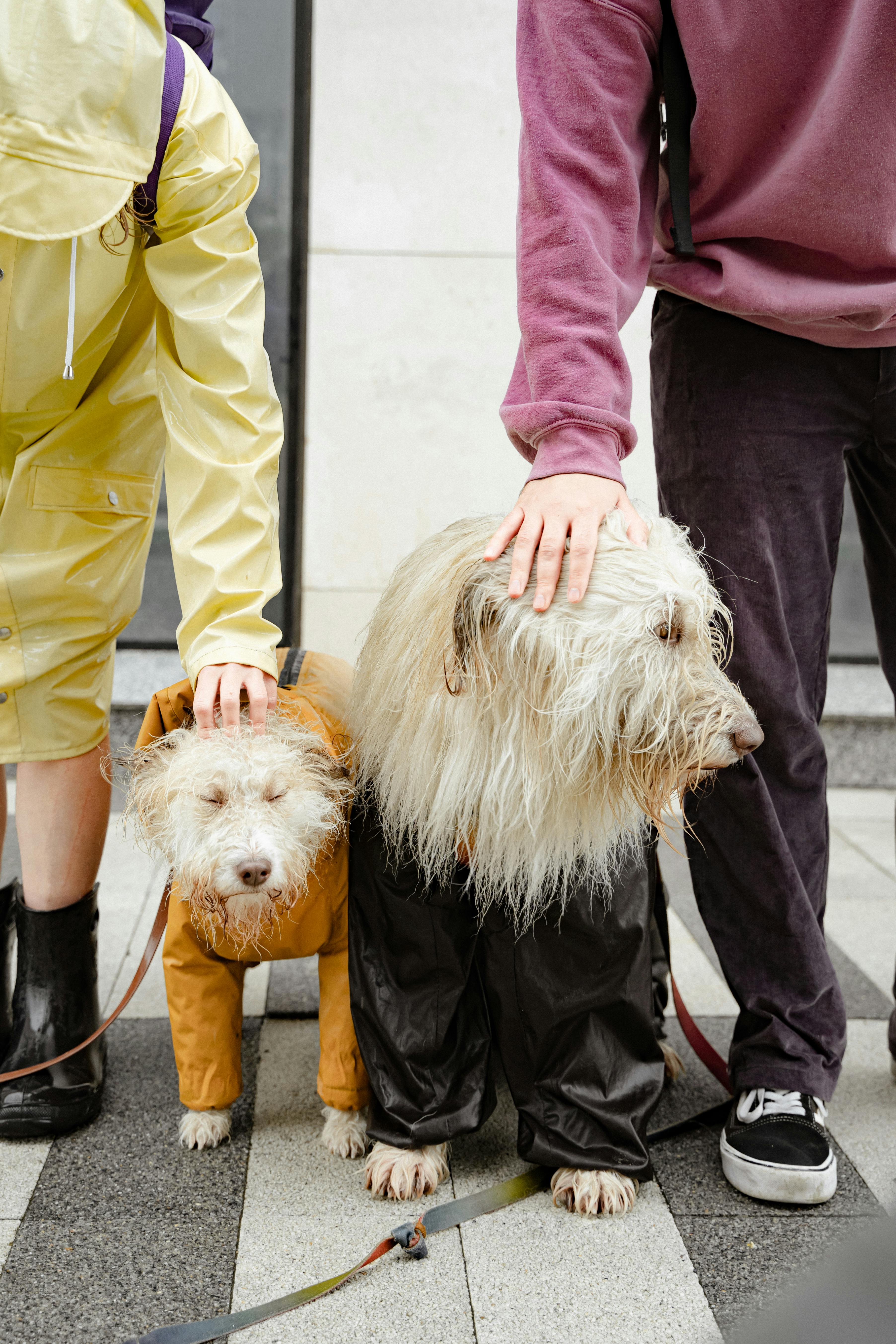
Dogs have been known for their unique ways of communicating, and one of the most interesting aspects of this is their wet noses. Many people often wonder, “Why do dogs have wet noses?” and “How do dogs use their wet noses to communicate with humans and other dogs?” These questions lead us into the fascinating world of canine communication and biology.
The Science Behind Wet Noses
Dogs’ noses are wet for several reasons, and these reasons goes beyond mere appearance. The moisture on a dog’s nose enhances their sense of smell, which is already highly developed compared to humans. Here are some key facts about why dogs have wet noses:
- Enhanced Olfactory Abilities: A wet nose helps trap scent particles in the air, making it easier for dogs to detect and analyze smells. This is crucial for their survival instincts.
- Temperature Regulation: Dogs don’t sweat like humans do. Their wet noses helps regulate their body temperature, acting as a cooling mechanism.
- Health Indicator: A dog’s nose can indicate their health status. A wet, cool nose generally suggests a healthy dog, while a dry nose might indicate dehydration or illness.
How Dogs Communicate With Their Noses
Dogs use their noses as a primary tool for communication, both with humans and other dogs. This communication can be quite complex and involves several behaviors and signals. Here’s how they do it:
- Scent Marking: Dogs have glands in their noses that produce scents. When they sniff other dogs, they are gathering information about their health, mood, and even their reproductive status. It’s like reading a personal profile!
- Greeting Rituals: Dogs often greet each other by sniffing noses. This is a way of saying “hello” and also gathering important information about one another.
- Human Interaction: When a dog nudges you with its wet nose, it can be a sign of affection or a request for attention. They may also use their noses to nudge objects, prompting you to play or feed them.
The Role of Nose Wetness in Communication
The wetness of a dog’s nose is not just a byproduct of their biology; it plays a crucial role in how they communicate. Here are several ways wet noses facilitate interaction:
- Increased Sensitivity: A wet nose can detect scents more effectively, allowing dogs to pick up on subtle changes in their environment. This helps them respond better to human emotions or other dogs’ signals.
- Social Signals: A dog’s wet nose can send social signals. For example, if a dog approaches another dog with a wet nose, it may indicate a friendly intent. Conversely, a dry nose might suggest stress or discomfort.
- Environmental Feedback: Dogs can sense changes in their environment through their noses. A wet nose may indicate that a dog is actively seeking information about their surroundings.
Fun Facts About Dogs’ Noses
Here are some fun and intriguing facts about dogs’ noses that you might not know:
- Unique Nose Prints: Just like human fingerprints, each dog has a unique nose print. This can be used for identification purposes.
- Scent Sensitivity: Dogs can detect certain scents at concentrations as low as one part per trillion. Their incredible sense of smell is about 40 times better than humans.
- Nose Shapes Vary: Different breeds have different nose shapes and sizes, which can affect their olfactory capabilities. For example, Bloodhounds have droopy noses that help them retain scent longer.
Practical Examples of Nose Communication
Understanding how dogs use their noses can help improve the bond between you and your pet. Here are some practical examples:
- Training: When training your dog, use treats to encourage them to use their nose to locate items or follow scents. This taps into their natural instincts and keeps them engaged.
- Socialization: Allow your dog to greet other dogs using their noses. This is an essential part of their social behavior and helps them learn how to interact with others.
- Health Monitoring: Keep an eye on your dog’s nose. If it suddenly turns dry or hot, consider consulting a veterinarian, as it could indicate an underlying health issue.
In summary, the wet noses of dogs serve multiple purposes that not only facilitate their communication with humans and other dogs but also enhance their sensory experiences. Understanding these aspects of canine biology can help you foster a deeper connection with your furry friend. Engaging with their natural behaviors, such as sniffing and exploring, can lead to a more fulfilling relationship for both you and your dog.
The Connection Between a Wet Nose and a Dog’s Sense of Smell Explained

Every dog owner has noticed it — your furry friend greets you with a cold, moist nose. But why do dogs have wet noses? It’s a question that has puzzled many and it goes beyond just being a cute feature. Understanding the connection between a wet nose and a dog’s sense of smell can be quite surprising. Let’s dive into the fascinating reasons behind this unique trait.
The Functional Purpose of a Wet Nose
First off, there’s a scientific reason why dogs noses are wet. A wet nose actually helps them to smell better. Dogs have an extraordinary sense of smell, estimated to be between 10,000 to 100,000 times more powerful than that of humans. The moisture on their noses aids in this process. Here’s how:
- Enhanced Odor Detection: The moisture helps to capture and dissolve scent particles in the air, which then improves the olfactory receptors in a dog’s nose.
- Temperature Regulation: A wet nose can help cool down a dog’s body. Dogs don’t sweat like humans do, so they use their noses to help regulate their body temperature.
- Health Indicator: A dog’s nose can also indicate their health. A wet, cold nose is often a sign of a healthy dog, while a dry or warm nose could signify illness or dehydration.
The Historical Context of Dog Noses
The history of dogs and their remarkable noses dates back thousands of years. Ancient civilizations recognized the value of a dog’s sense of smell, often using them for hunting and tracking. For example:
- Ancient Egypt: Dogs were revered and even mummified, showcasing their importance.
- Medieval Europe: Hunting dogs were trained to use their noses to track game, demonstrating the practical use of their keen sense of smell.
Why Are Dog Noses Wet?
Now let’s break down the reasons why dogs have wet noses into more simple terms. Here are some surprising facts:
- Mucus Production: Dogs’ noses produce mucus, which keeps the surface moist. This mucus traps scent particles, allowing for better smell detection.
- Licking Behavior: Dogs often lick their noses, which keeps them wet. This behavior can also transfer scents from their nose to their mouth, aiding in their understanding of their environment.
- Environmental Factors: Humidity and temperature can affect how wet a dog’s nose is. A dog may have a wetter nose in a humid environment compared to a dry one.
Comparison of Dog Noses to Human Noses
To understand the uniqueness of a dog’s nose, let’s compare it with human noses:
- Size and Structure: Dog noses are larger and have more olfactory receptors than human noses, allowing them to detect a broader range of scents.
- Nasal Passages: Dogs have convoluted nasal passages that increase the surface area for scent detection, while humans have a simpler structure.
- Wet vs. Dry: Human noses can get dry but we don’t rely on them for scent as much as dogs do. A dry human nose doesn’t affect our ability to smell as drastically as it does for dogs.
Practical Examples of Dog Nose Functions
Here are some practical examples of how a dog’s wet nose benefits them:
- Tracking: Bloodhounds can track scents that are days old, thanks to their wet noses picking up minute scent particles.
- Search and Rescue: Dogs used in search and rescue missions rely on their sense of smell to locate missing persons, and their wet noses play a crucial role.
- Medical Detection: Some dogs are trained to detect diseases like cancer or diabetes through scent, showcasing the incredible capabilities of their noses.
Fun Facts About Dog Noses
- Unique Patterns: Just like human fingerprints, every dog has a unique nose print that can be used for identification.
- Temperature Sensitivity: A dog’s nose can be more sensitive to temperature changes than their skin, providing them with a better sense of their surroundings.
- Nose Shape Variations: Different breeds of dogs have different nose shapes which can affect their smell capabilities. For example, a Bloodhound’s droopy nose is designed to keep scents close to the ground.
Understanding why do dogs have wet noses and their connection to their sense of smell reveals just how remarkable these creatures are. Their wet noses aren’t just adorable; they are essential tools that help dogs navigate the world around them. From tracking scents to detecting illnesses, a dog’s nose is a powerful asset that certainly deserves appreciation. So next time your dog greets you with that cold, wet nose, remember the incredible science behind it!
Why Do Puppies Have Wetter Noses Than Adult Dogs? Discover the Reasons!
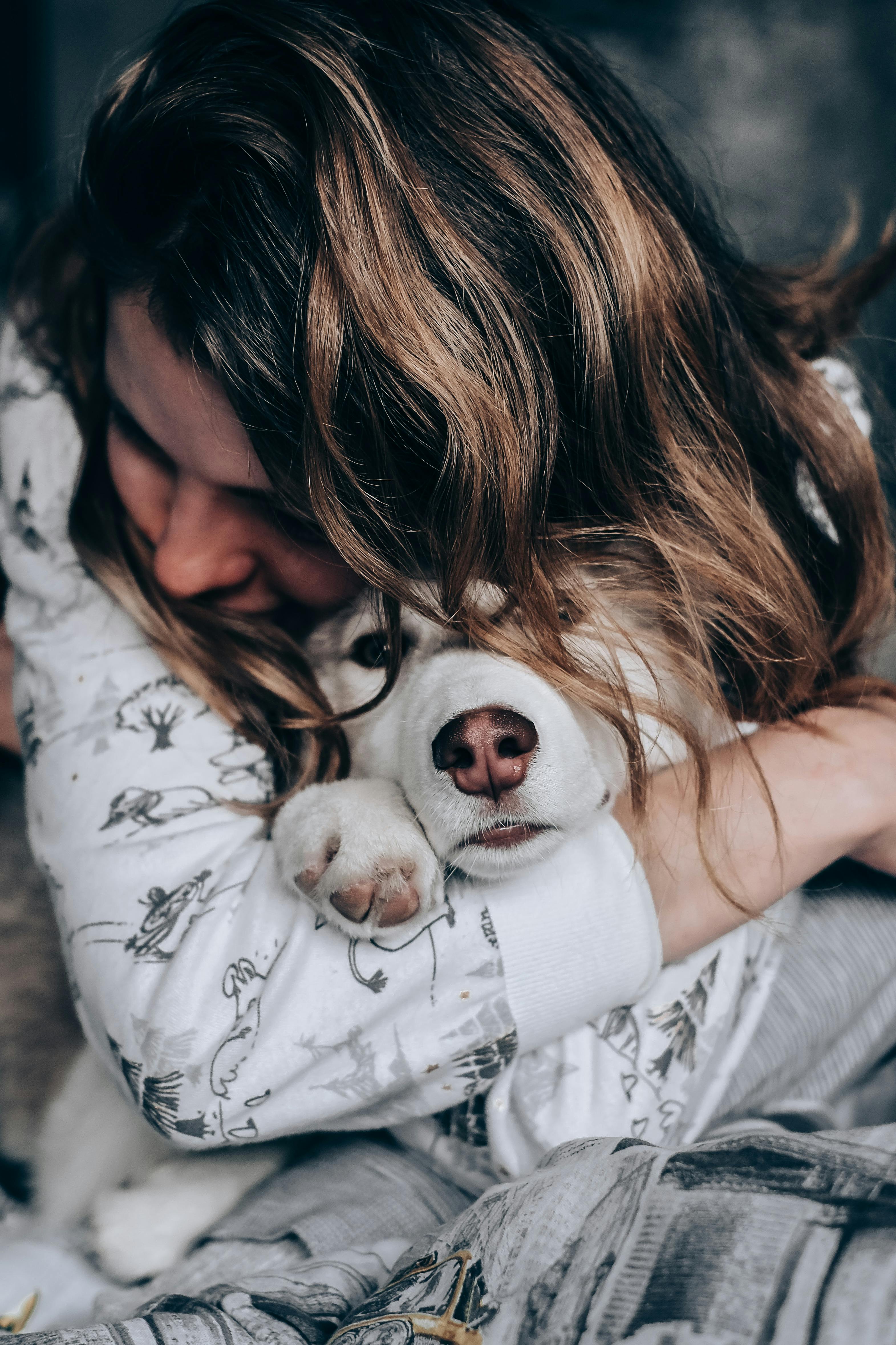
When people think about dogs, one often wonders why puppies has wetter noses than their adult counterparts. It’s kinda fascinating and not just a cute thing to observe. There’s actually science behind it, which can help us understand more about our furry friends. So, if you’ve ever scratched your head and thought, “Why do dogs have wet noses?” you’re in for a bit of an exploration!
What Makes a Dog’s Nose Wet?
First off, a wet nose in dogs serves a few important purposes. Dogs’ noses are moist for a reason. It helps them in scent detection, which is super important for them. A wet nose can capture more scent particles in the air, making it easier for dogs to smell. That’s why they sniff around everywhere!
- Scent Enhancement: A wet nose improves a dog’s ability to detect and identify smells. This is because moisture helps to absorb scent molecules.
- Temperature Regulation: Dogs don’t sweat like humans do. Instead, they regulate their body temperature through panting and having a moist nose. The moisture evaporates, helping cool them down.
- Health Indicator: A wet nose usually indicates a healthy dog. However, it’s not always the case; dryness can sometimes mean illness, but not always.
Puppies vs. Adult Dogs: What’s the Difference?
Now, why do puppies have wetter noses than adult dogs? There’s several factors at play here. Puppies are naturally more energetic and curious, which means their noses are often wet from exploring. Their bodies are also still developing, so they tend to have more active mucous glands.
- Developmental Factors: Puppies are still growing, and their bodies produce more mucus. This results in a wetter nose.
- Behavior Differences: Puppies tend to lick their noses more often than adult dogs, keeping them moist.
- Age and Health: Older dogs might not have the same level of activity or health as puppies, which can affect the moisture of their noses.
Why Do Dogs Have Wet Noses? The Surprising Reasons!
You might be wondering if there’s more to the story. Of course, there is! The wetness of a dog’s nose can be attributed to several surprising reasons. Here are a few:
- Environmental Factors: Weather and humidity can play a big role. If it’s raining or the air is more humid, dogs’ noses are likely to be wetter.
- Diet: What a dog eats also influences its nose moisture. A diet with less hydration can lead to drier noses.
- Hydration Levels: If a dog isn’t drinking enough water, it might have a drier nose. Staying hydrated is key for all pets.
- Nose Shape: Breeds with longer noses often have wetter noses because of how they capture scents.
The Science Behind the Moisture
Understanding the science behind a dog’s wet nose can be quite interesting. Here’s a quick breakdown of how it works:
- Nasal Mucosa: The nose has a lining that secretes mucus, which keeps the nose moist.
- Olfactory Receptors: Dogs have millions of olfactory receptors that help them smell. A moist nose helps these receptors work better.
- Thermoregulation: The evaporation of moisture from the nose cools the dog’s body, just like sweating for humans.
Common Misconceptions About Dog Nose Wetness
There are some myths about dog noses that are worth debunking. For instance, it’s a common belief that a cold, wet nose means a dog is healthy. While it’s often true, it’s not a definitive way to gauge a dog’s health.
- Myth 1: A wet nose means the dog is sick.
- Myth 2: All dogs have wet noses all the time.
- Myth 3: The nose must be cold to be healthy.
Practical Takeaways for Dog Owners
As a dog owner, you can keep an eye on your furry friend’s nose for any changes, which might indicate health issues. Here’s a quick list of things to remember:
- Regularly check your dog’s nose for dryness or cracking.
- Ensure your dog has fresh water available at all times.
- Consult a vet if you notice any significant changes in moisture or temperature.
In summary, the moisture of a dog’s nose, whether it be a puppy or an adult, serves crucial functions in their health and sensory capabilities. Understanding these little quirks can enhance our bond with our four-legged companions. So next time you see your pup with that wet nose, you can appreciate the science behind it!
Can Weather Affect Your Dog’s Nose Wetness? What Pet Owners Should Know
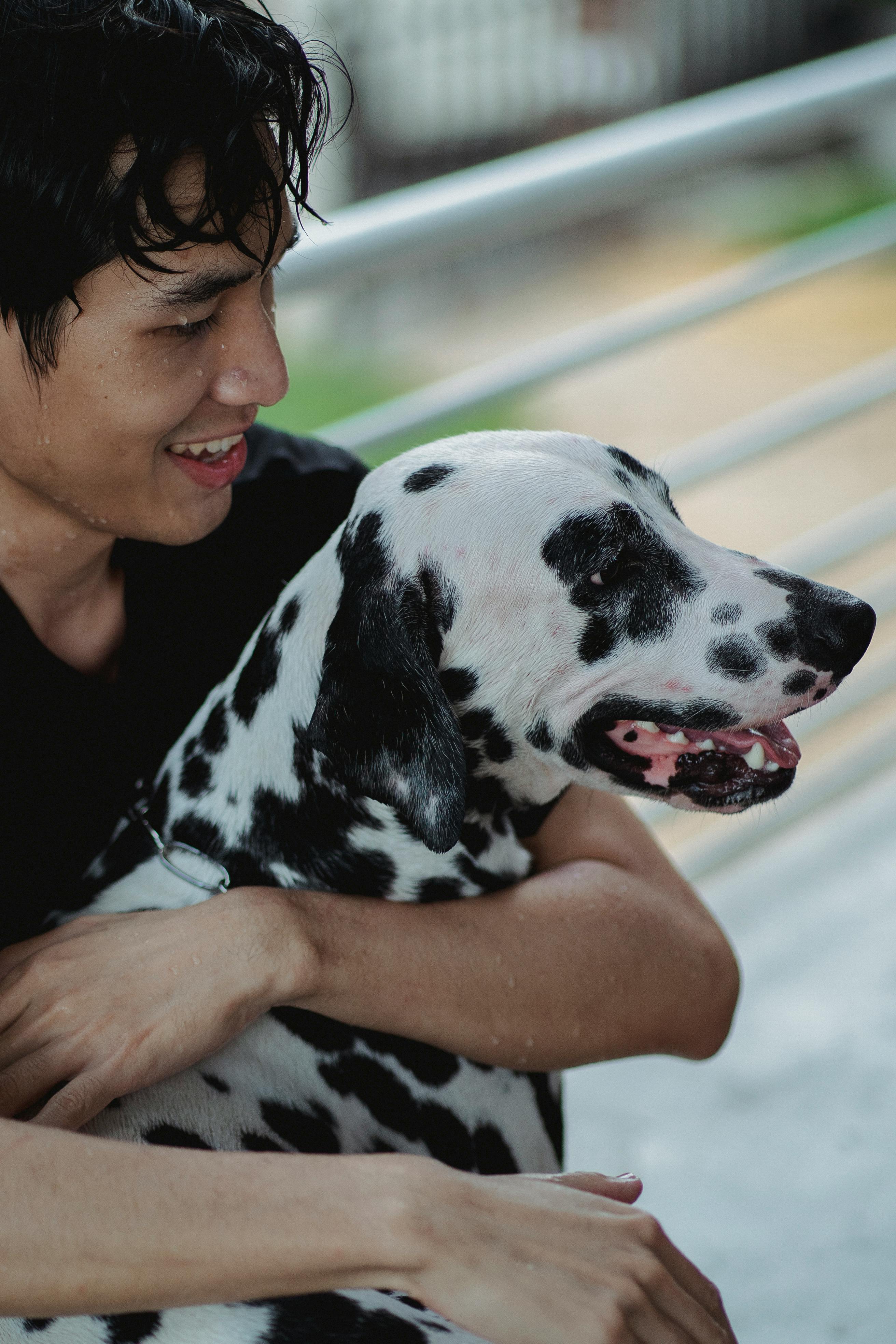
When it comes to our furry friends, many pet owners often wonder about the little things, like why do dogs have wet noses? It’s not just an adorable trait; it actually serves multiple purposes. But did you know that weather can also affect your dog’s nose wetness? This is something many pet owners might overlook. Let’s dive into this fascinating topic and explore what you should know about your dog’s nose.
The Science Behind Wet Noses
First of all, wet noses is a common feature among dogs, and there are several reasons for it. A dog’s nose secretes moisture, which helps with their sense of smell. Dogs have around 220 million scent receptors, making their sense of smell far superior to humans. A wet nose can help enhance their olfactory abilities by trapping scent particles.
Temperature Regulation: Dogs don’t sweat like humans do; instead, they rely on their noses to help regulate their body temperature. The moisture on their noses evaporates, which cools them down.
Health Indicator: A wet nose is often seen as a sign of a healthy dog. However, it’s not the only factor to consider when determining your dog’s well-being. A dry or excessively warm nose could indicate dehydration or illness.
Behavioral Signals: Dogs often lick their noses to keep them wet or to prepare themselves for smelling something. This behavior can be instinctual and helps them interact with their environment.
Can Weather Affect Your Dog’s Nose Wetness?
You might be surprised to learn that weather can indeed play a role in how wet or dry your dog’s nose is. Here’s how different weather conditions can influence it:
Humidity Levels: When the air is humid, a dog’s nose will likely stay moist. Conversely, in dry conditions, like during winter or in arid climates, their noses may become dryer.
Temperature Fluctuations: Extreme heat can cause a dog’s nose to dry out, while a cool, moist environment may keep it wet. This is similar to how our skin reacts to temperature changes.
Precipitation: Rainy days might not just make your dog want to play outside; they can also contribute to a wetter nose. The moisture in the air helps keep their noses hydrated.
What Pet Owners Should Watch For
As a responsible pet owner, it’s crucial to monitor your dog’s nose, especially during extreme weather. Here are some signs to keep an eye on:
Consistently Dry Nose: If your dog’s nose is persistently dry and warm, it might be a sign of dehydration or illness.
Cracked or Flaky Nose: This might indicate a skin condition or allergy. Keeping the nose moisturized can help.
Excessive Moisture: While a wet nose is usually a good sign, if it becomes excessively moist or oozes discharge, it could indicate an infection or other health issues.
Additional Factors Influencing Nose Wetness
Aside from weather conditions, other factors can affect your dog’s nose wetness too. Here are some to consider:
Diet: A well-balanced diet with enough hydration can help maintain moisture levels in your dog’s nose.
Age: Older dogs may experience changes in their nose moisture, similar to how human skin can become drier with age.
Health Conditions: Certain medical conditions like autoimmune diseases can cause changes in nose moisture levels. Regular vet check-ups can help diagnose any underlying issues.
Fun Facts About Dog Noses
Here are some interesting tidbits about dog noses that you might not have known:
Dogs have unique nose prints, much like humans have fingerprints.
A dog’s sense of smell can be trained to detect diseases, including cancer and diabetes.
The moisture on a dog’s nose can help them identify odors more accurately, with the wet surface capturing scent particles better.
In summary, the wetness of your dog’s nose can be influenced by various factors, including the weather. Keeping an eye on these changes can help you monitor your pet’s health effectively. Always consult with your veterinarian if you notice any significant changes in your dog’s nose or overall health. Understanding the reasons behind why do dogs have wet noses can help strengthen the bond between you and your canine companion. So, the next time you see your dog’s nose, remember it’s not just cute; it’s a fascinating part of their biology!
Wet Noses and Canine Behavior: What Your Dog’s Nose Can Tell You
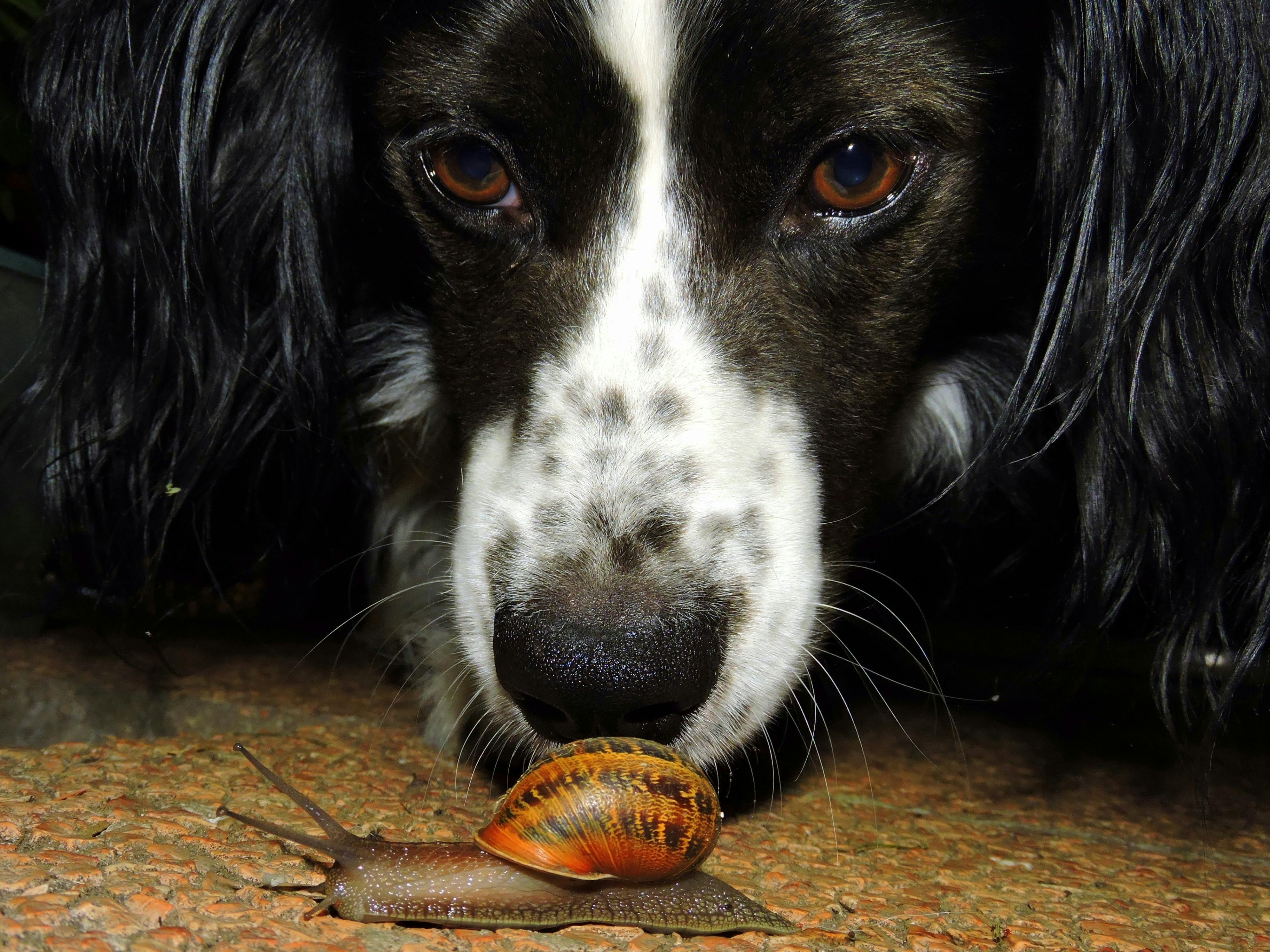
Dogs are one of the most beloved pets around the world, and their wet noses are often a curious topic among pet owners. Why do dogs have wet noses? What can that little, moist appendage tell us about their health and behavior? In this article, we will explore these questions and more, diving deep into the surprising reasons behind your dog’s wet nose.
The Science Behind Wet Noses
First off, wet noses are not just a random feature. They serve several essential functions. Dogs have a special way of cooling themselves off, much different than humans. When they pant, their wet noses help to regulate their body temperature. The moisture on their noses evaporates, which cools them down. This is especially crucial during hot days when dogs are more likely to overheat.
Furthermore, a dog’s nose itself is packed with scent receptors; in fact, dogs have about 300 million of these receptors compared to a human’s mere 5 million. A wet nose also enhances a dog’s sense of smell. The moisture helps to trap scent particles, making it easier for dogs to identify various smells in their environment. This is why you may notice your dog sniffing around more when they’re outside; their nose is working overtime!
Historical Context of Dogs’ Noses
Historically, dogs were used for hunting and herding, relying heavily on their sense of smell. In ancient times, wet noses were just as important as they are today. A dog’s ability to track scents was vital for survival, whether it was hunting for food or locating lost livestock. This characteristic has been refined over generations, making dogs the incredible scent detectors they are now.
The Health Connection
So, what does a wet nose indicate about your dog’s health? Generally, a moist nose is a good sign. Here’s a quick checklist to keep in mind:
- Normal Temperature: A dog’s nose can be wet yet cool, which is typical. A dry, hot nose may indicate fever or dehydration.
- Hydration Levels: Wet noses usually mean well-hydrated dogs. If your dog’s nose is excessively dry or cracked, it could be a sign they need more water.
- Illness Indicator: Changes in the moisture level can sometimes indicate health issues. For example, if your dog’s nose suddenly becomes dry, it might be worth consulting a vet.
Fun Facts About Dog Noses
- Unique Patterns: Just like fingerprints in humans, each dog has a unique nose print.
- Scent Detection: Dogs can detect certain diseases like cancer or diabetes just by smelling. Their noses are powerful tools!
- Temperature Regulation: Dogs sweat through their paw pads, but their noses play a role in thermoregulation too.
The Behavior Connection
Dogs communicate in various ways, and their noses play a critical role in their behavior. Here are a few behaviors linked to their noses:
- Sniffing: When dogs sniff around, it’s their way of gathering information about their environment. They pick up scents from other animals, food, and even the weather.
- Greeting: Dogs often greet each other by sniffing noses. This is their way of saying “hello” and learning about the other dog.
- Curiosity: A wet nose can signal curiosity. When dogs are keen on exploring something new, it often leads them to sniff it thoroughly.
Dog Nose Care Tips
To ensure your dog’s nose remains healthy, consider these tips:
- Hydration: Always provide fresh water to keep them hydrated.
- Moisturizing: If your dog’s nose seems excessively dry, a vet-approved moisturizer can help.
- Monitor Changes: Keep an eye on any sudden changes in your dog’s nose condition and consult your vet if necessary.
Summary of Key Points
- Wet noses help dogs cool off and enhance their sense of smell.
- They play a crucial role in communication and social interactions.
- Regular monitoring can help you catch health issues early.
In summary, your dog’s wet nose serves multiple essential purposes, from enhancing their sense of smell to keeping them cool. Understanding the significance of this unique feature can help you better care for your furry friend. Remember, a wet nose is often a sign of a happy and healthy dog, so cherish those moments of wet-nosed affection!
Understanding the Importance of Nose Moisture: Tips for Keeping Your Dog Healthy

Understanding the Importance of Nose Moisture: Tips for Keeping Your Dog Healthy, Why Do Dogs Have Wet Noses? Discover The Surprising Reasons!
Have you ever wondered why dogs have wet noses? It’s one of those quirky things about dogs that make them so lovable, right? But there’s actually a lot more to it than just cuteness. Wet noses are not just an adorable trait; they serve several important purposes for a dog’s health and well-being.
The Science Behind Nose Moisture
Dogs have moist noses for a few specific reasons, and each one plays a critical role in their overall health. One of the most significant reasons is related to their sense of smell. A wet nose helps to absorb scent particles from the air, which enhances their ability to detect different smells. Dogs, with their incredible olfactory receptors, rely heavily on this moistness to interpret their environment.
Did you know that the structure of a dog’s nose is also designed to help? The surface of the nose has a unique texture that traps moisture. This combination of moisture and texture optimizes their sense of smell, making them exceptional at tracking scents.
The Role of Temperature Regulation
Another surprising benefit of a wet nose is that it helps regulate a dog’s body temperature. Dogs don’t sweat like humans do; instead, they rely on panting and their nose moisture to cool down. When your dog’s nose is wet, it can evaporate moisture, providing a cooling effect. This is particularly important during hot weather when dogs are more susceptible to overheating.
- Dogs can sweat a little through their paw pads, but this is not enough to keep them cool.
- A wet nose also indicates that your dog is well-hydrated, which is essential for their health.
Health Indicators: What a Wet Nose Can Tell You
So, what does it mean if your dog’s nose is dry? It can be a sign of various conditions. Here some points to consider:
- Dehydration: A dry nose could indicate that your dog might not be drinking enough water.
- Illness: If your dog’s nose suddenly becomes dry when it was usually moist, it could be a sign of illness.
- Allergies: Environmental factors can lead to a dry nose, signaling potential allergies or irritations.
Keeping Your Dog’s Nose Healthy: Tips and Tricks
Keeping your dog’s nose moist is essential for their health. Here are some useful tips:
- Ensure Hydration: Always provide fresh water for your dog. This is the simplest way to help keep their nose moist.
- Monitor Temperature: Avoid exposing your dog to extreme heat. If they’re panting heavily, find a cool place for them to rest.
- Use Nose Balm: If you notice persistent dryness, consider using a dog-safe nose balm. This can help maintain moisture levels.
- Regular Vet Checkups: Regular visits to the vet can help catch any health issues early, including those that might affect your dog’s nose.
Fun Facts About Dog Noses
- Dogs can differentiate between over 1 trillion scents! Their wet noses play a huge role in that.
- The texture of a dog’s nose is unique, much like human fingerprints.
- A dog’s sense of smell is 10,000 to 100,000 times more acute than a human’s!
The Bottom Line
In short, the wetness of your dog’s nose serves multiple functions that are crucial to their overall health. It’s not just a cute feature; it’s an essential aspect of how dogs interact with their world. Keeping an eye on your dog’s nose can give you insights into their health and well-being.
Whether you’re a new dog parent or a seasoned pro, understanding these simple facts can help you keep your furry friend in tip-top condition. So next time you give your pup a little scratch behind the ears, take a moment to appreciate that wet, cold nose. It’s a sign of a healthy, happy dog!
Conclusion
In conclusion, the wet noses of dogs serve several important functions that contribute to their overall health and well-being. Primarily, the moisture helps enhance their sense of smell, allowing them to detect scents more effectively, which is crucial for their communication and navigation in the world. Additionally, a wet nose plays a role in thermoregulation, helping dogs cool down in hot weather. While a dry nose may sometimes indicate dehydration or illness, it’s essential to consider other symptoms before jumping to conclusions. Understanding your dog’s nose can enhance your ability to care for them properly. As a responsible pet owner, keep an eye on your dog’s health and behavior, and don’t hesitate to consult a veterinarian if you notice any significant changes. Embrace the quirks of your furry friend, and appreciate the unique characteristics that make dogs such beloved companions.

